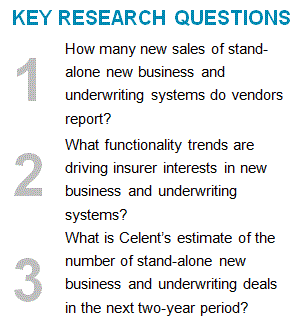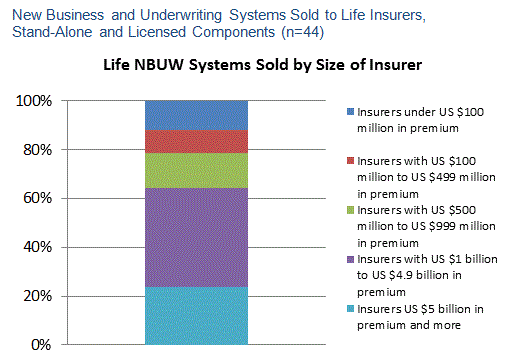What’s Hot and What’s Not: Deal and Functionality Trends and Projections in the Life New Business and Underwriting Market: 2016 North American Edition
Abstract
 |
Celent has released a new report titled What’s Hot and What’s Not: Deal and Functionality Trends and Projections in the Life New Business and Underwriting Market: 2016 North American Edition.The report was written by Karen Monks and Colleen Risk, analysts in Celent's Insurance practice. Life insurers are ripe for automation in their front end processes for new business and underwriting, especially in underwriting. Underwriting automation is integral if life insurers want to improve operational efficiencies and make selling to the middle market a profitable business. |
This report provides a view of the market and deal and functionality trends for new business and underwriting systems available to life insurers in North America. It looks at the previous four-year period for trends and looks forward two years for projections. It includes vendor-supplied data about stand-alone sales for the two-year period from Q2 2013 to Q1 2016 and customer counts as of Q1 2016.
Celent believes that sales of stand-alone life insurance new business and underwriting systems in North America will continue at a steady pace. The overall number of insurers with vendor software for new business and underwriting is low in comparison to the potential market. The cost of manual underwriting is too high for middle market face values; insurers must find ways to automate the external data in underwriting to help make decisions that are consistent with the level of risk being underwritten.
“There is a bias toward selling to larger insurers. In order to gain operational efficiencies from the systems, a significant volume of applications must be run through the systems,” says Karen Monks, an analyst with Celent’s Insurance practice and coauthor of the report. “However, Celent is aware of several midsize insurers that are making the investments in new business and underwriting systems in order to remain competitive. Implementing a system allows a midsize insurer to quickly scale with growth, something that is difficult with human underwriters.”
“Underwriting systems are becoming hot in the marketplace,” says Colleen Risk, senior analyst in Celent’s Insurance practice and coauthor of the report. “Automating underwriting rules is a key step along the path to digital and straight-through processing.”


